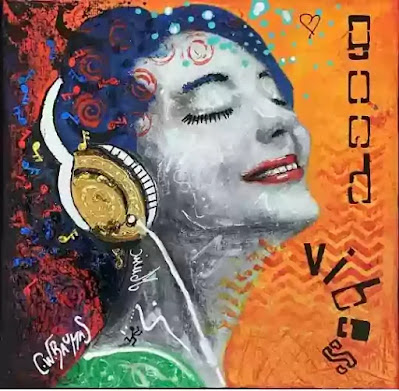Also Read
Laughing Song
Summary and Analysis
Introduction:
If 'The Echoing Green' indulges in exuberant audible imagery, 'Laughing Song' is embroidered in a rich vein of visual imagery. The poem is a rhapsodic outburst of rural festivity harmoniously blended with the giggling sound of innocent children. Even the inanimate objects such as the streams, the meadows and the woods resign themselves to jollity and become an unavoidable part of rural innocence which is, as usual in Blake's poems, represented by the children like Mary, Susan and Emily. It is to this spotless and unblemished atmosphere that the poet invites us cordially.
 |
| Laughing Song |
Summary:
The lively picture of a landscape with every one of its animate and inanimate objects pulsating with life is tellingly drawn in the poem 'Laughing Song'. The woods let out exaltations of joy and the stream runs (not simply flows!) and laughs, its waves resembling dimples of laughter. The air and the green hill laugh merrily and respond to the joviality. In the second stanza the poet portrays the laughing meadow which is rich in greenery and even the insignificant grasshopper celebrates the scene, laughing merrily. This all-pervading happiness is further made symphonic with the laughing notes of three children - Mary, Susan and Emily. In the third stanza the colourful birds are said to be laughing in the shade. Now that the rural air is overwhelming in its visual splendour the poet makes the occasion more gracious, inviting us to the 'table with cherries and nuts', to join him in singing the sweet chorus of "Ha, Ha, He!".
Carefree Festivity Portrayed:
The speaker, as if one of the participants of the rural festivity invites the listener to join him. But as we see. it is not an outburst with an awareness that he and the listener are apart from the scene. Both the listener and the poet are presumably a single entity.
The Colourful Pageantry:
The imagery of the poem produces a lasting sensory impact upon the reader. The green woods and the glassy crystalline stream gliding, dimpling, through the valley, and the hills adorned with the rich array of greenery and the vast meadow, are all appealing to the eye. The panoramic painting of the lovely landscape is made sonorous with the laughing songs of innocent children. The word 'laugh' is to be underscored because it actually adds an audible sensation of joy to the visual impact of the scenery. The cherries and nuts arranged on a table is another delightful sight carrying us far back to the land of fairies, of a Keatsean island scenery of oozing beauty and Arcadian charm. The reader is invited to this scene of innocent beauty where there is complete abandonment to the mood of joy.
The Countryside Simplicity:
With unpremeditated art Blake welcomes us to a land of rural innocence where there is no tinge of either grief or gravity. During the period of Shakespeare and Sidney there were worshippers of the countryside calm and the poets of this period offer us innumerable pictures of landscape beauty similar to the ones given by Blake. That is why we call the romantic period of Blake and Wordsworth as the period of 'Romantic Revival'. The children, woods, hills and meadow and stream constitute the aspect of innocence in the poem. They are by far the general objects of innocence in Songs of Innocence.